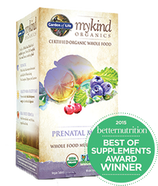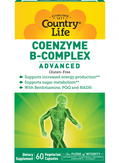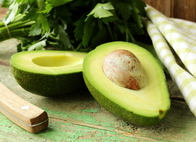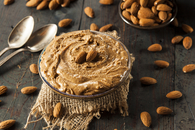 It can be difficult to leave the long, fun summer days behind and motivate your kids when they have to get up early, have less free time, and homework. With the right nutrition, adequate sleep, and some help from nutritional supplements, you can provide your children with the tools they need to start the school year off right, stay well, and improve cognition, mood and attitude. Sleep: The best way to support your child as they head back to school is by ensuring they get enough sleep. It is during sleep that the body is able to heal and repair itself, the adrenal system is able to relax and restore itself, and the brain catalogs all that it has learned during the day. The body and brain is developing at a rapid rate during childhood, and especially teenage years, and sleep is imperative to supporting their health. Children who do not get enough sleep will be overly emotional, meaning they can be less patient, easy to anger, or will be sensitive to getting their feelings hurt. They will show signs of hyperactivity, fast and excessive talking, ADHD, and defiant or contrary behavior. They also can express as having no energy and you will see an increase in their appetite for foods high in sugars. The combination of lack of sleep, and a diet high in sugars and carbohydrates will easily lead to feelings of restlessness or anxiety and puts your child on the path to type 2 diabetes. It is recommended that preschoolers ages 3-5 get 10 to 13 hours of sleep per night, school aged children 6-13 get 9 to 11 hours of sleep per night, and teenagers 14-17 years get 8 to 10 hours of sleep per night. Each child’s need for sleep will be different, and factors like growth spurts, consistent physical activity, and physical or emotional stress will likely increase the need for longer periods of sleep. Your kids will benefit from a nightly routine preparing their body for sleep and consistent bedtime. This can include a light snack, taking a bath, brushing their teeth, and then reading in bed. Some children will unwind better through a bedtime yoga practice, guided meditation, or light massage. Let your children be a part of creating this process and they will be more willing to embrace structure around bedtime. Natural Calm is an effervescent drink that can help restore low levels of magnesium that are needed for sleep, energy, and a stable mood. It can also help relieve the muscle cramps and aches associated with growing pains in children. Gaia makes a delicious tasting syrup called Sleep and Relax which uses an herbal blend of chamomile, lemon balm and passion flower that act synergistically to help calm the body and mind of your child. This blend prepares them for sleep and they will wake up feeling re-energized. You can use this syrup as needed and for the week before school as you implement an earlier bedtime from summer. If your child likes to drink tea, add a cup of Tulsi Tea to their bedtime routine. Tulsi, commonly known as Holy Basil, is an herb that acts as an adaptogen to help protect the body from the harmful side effects of stress by promoting relaxation and a sense of relief from every day stressors. Drinking a cup of Tulsi tea will help calm your child’s body and mind and encourage deep, restorative sleep. Incorporating essential oils can also have a significant effect on the quality of sleep. Lavender has been clinically shown to help children fall asleep faster, and enter a state of restorative sleep more quickly and for longer periods of time. You can diffuse lavender in their room, massage it into their feet, or spray it onto their pillow and blanket. Calm Baby/Sleepy Time Blend for children 3 months & older
Nutrition: With the onslaught of refined and chemical sugars and an array of unhealthy and toxic fats in packaged and fast foods, it is more important than ever to provide quality and nutrient dense foods. For breakfast try to get healthy fats, protein and a good carbohydrate for energy. Overnight Oats are a perfect breakfast, and one that your kids can make to their liking. Bento Boxes are a fun, new way to pack a good school lunch. These containers can have 4-5 sections to help you provide a wide variety of foods with different colors, flavors and textures. Or you can use cookies cutters and silicon baking cups to help create a fun bento box using a container that is about 4x6 inches wide. Your kids will also have fun preparing these lunches, and it can be a great way to introduce new foods they might be wary of trying. There is often a good four hours between the time your child eats lunch and then gets home from school. To prevent the crash from low blood sugar, and the subsequent frantic grab for foods high in sugar, have a snack packed in their backpack, or ready to eat on the ride home. This will help stabilize blood sugars, and give them good, sustained energy to play or study on before dinner. A homemade trail mix will provide healthy fats and protein. Take your child to the bulk section and let them pick from raw nuts and seeds, dried fruit, dark chocolate chips, peanut butter chips, coconut flakes and mix them together at home. Add air popped popcorn for some extra crunch and fiber. You can also throw seasonings in like chili powder, cinnamon, garlic powder or curry powder. Another great after school snack is having cut up vegetables or fruits and a great dip. Most kids will eat anything dipped in ranch or Nutella. You can make a delicious ranch dip by substituting Greek yogurt for the mayonnaise and sour cream. You get the same tang and healthy fats and protein. You might be surprised to find your kids will love hummus. Hummus is made from chickpeas and tahini, providing protein and a good dose of fiber. You can make your own hummus and substitute zucchini for the chickpeas. Have your kids create a new seasoning blend for each recipe you make and they will be more likely to reach for it in the fridge. For fruit you can make your own Nutella with just five simple ingredients, and it is perfect for dipping apples, bananas, pears or strawberries. Another easy and delicious dip can be made from whipping up a can of coconut milk! It is naturally sweet and full of healthy fats and it won’t spike your children’s blood sugar. You can always add a few drops of strawberry flavored stevia if your children don’t love the mild coconut flavor. A quality multivitamin can help fill any gaps in your child’s diet, and provide them with nutrients that are now difficult to get through food alone. Pound for pound, kids need more nutrients than adults, and a multivitamin ensures proper development. Vitamins and minerals play key roles in the brain that support cognitive tasks like learning, problem solving, focus, and recall. Kids One Daily by MegaFood was formulated by a mother for children ages 5 and older. It is made from whole foods, left in their raw state, so the 24 essential nutrients provided are easily digested and absorbed by the body. It also contains an antioxidant blend from fresh fruits that help to support the immune system. It is gluten free, vegetarian, soy free, dairy free, kosher, and non-GMO certified. Nordic Naturals is the maker of the popular Nordic Berries, a chewable, pectin based multivitamin for kids two and older. It provides the essential vitamins, minerals, and antioxidants that growing kids need. Children’s Oxylent is an award-winning daily multivitamin drink that supports child development, strengthens growing bones and muscles, and boosts immune health. It provides optimum bioavailability, is sweetened with stevia, and is gluten free, dairy free, soy free, and herb free. Immune Health Bacteria and viruses are the major culprits of illness as your children head back to school, as they are spread easily through contact with contaminated people, surfaces, food, and water. They produce many common side effects like coughing, sneezing, fever, and vomiting. Just as easily as they are spread, you can prevent bacteria and virus from making your child sick by providing the right vitamins, minerals and herbs to keep their immune system strong. MegaFood makes Kids Daily Immune, a nutrient booster powder. It has little to no flavor, and is easily hidden in juice, a smoothie, yogurt, or it can be added to a pancake/waffle mix. It contains Vitamin C, Elderberry, Astragalus, Echinacea, and an antioxidant blend from whole foods. Vitamin C is the master immune-boosting nutrient. Alone, it is anti-viral and anti-bacterial and is able to detox your body of toxins from bacteria. Elderberry has been shown to reduce the severity and length of influenza. Elderberry acts as an antiviral by attaching itself to the tiny protein spikes on the surface of a virus, preventing it from being able to penetrate healthy cells. It has also been shown to be effective against antibiotic resistant viruses. Astragalus is an incredible antiviral that strengthens and regulates the immune system to prevent upper respiratory infections and the common cold and flu. Taking Echinacea at the first signs of a cold or flu optimize its benefits to shorten the severity and duration of illness. It has no added sugar, sweeteners, flavorings, preservatives or fillers. Kick-It Immune by Wishgarden Herbs is a combination of kid-friendly herbs that help to activate your child’s natural immune response and support the lymphatic system. Taken every hour at the onset of symptoms, it helps to stop bacteria and virus from developing into a full-blown illness. It works quickly and the herbs are incredibly effective. Elderflower is antiviral, anticancer, antioxidant and anti-inflammatory. It is excellent for treating colds, flus, sinus infections and respiratory troubles. Calendula stimulates the immune response and relieves symptoms from the cold and flu. Yerba Santa works incredibly well at opening the lungs and sinuses to dissolve and remove accumulated phlegm. Yerba Santa supports the body against coughs, colds, flus, pneumonia, and chest congestion. Osha Root has antifungal, antiviral and antibacterial properties and helps to significantly reduce inflammation in the bronchial tubes. Osha root encourages your body to sweat, helping reduce fevers and detoxing your body of the flus, coughs, colds and other viral infections before symptoms worsen. It also contains Echinacea. Host Defense makes an Immune Support spray in peppermint or cinnamon flavors that contain five powerful mushrooms that provide a “shield” for your immune system. Mushrooms are a functional food and have a full-spectrum of components that enhance the body’s immune system, increase the activity and effectiveness of natural killer cells and macrophages, support stress and fatigue, and protect from daily environmental exposure to toxins and pollutants. Just a couple of sprays a day after your child has brushed their teeth (or diluted in water) can help protect them from the fiercest of bacteria or virus. You can also support immune health by avoiding junk food and sugar, stress, and lack of sleep. Sugar significantly inhibits the process of phagocytosis, the process by which immune cells engulf, kill and digest invading microbes. Just 75-100 grams of sugar (the amount in two cans of soda) starts to suppress immune health within just 30 minutes and can continue to for at least five hours after ingestion. Stress significantly impacts the health of your immune system and its ability to fight off disease by elevating levels of the hormone cortisol. Chronic stress lowers the amount and function of T cells and macrophages, ultimately leaving your child more vulnerable to disease and illness. Virus and bacteria thrive in a body wracked by stress, and spread and mutate more quickly throughout the body. Keeping the body from sleep contributes to an increase in cortisol levels. Those who are sleep deprived have lower levels of killer cells. The digestive system is also disrupted by a lack of sleep. Since the immune system lives in your gut, it is important to keep the digestive system healthy and replenished with good, healthy probiotics. Garden of Life makes a powdered probiotic and a chewable probiotic for children with strains specific to immune and digestive health. Their probiotics are made from raw, fermented foods, which maintain more live nutrients, enzymes and probiotics strains. Mood, Focus & Cognition New advances in technology have allowed scientists and neurologist to study and track the growth of the brain. Recent research has shown that the brain continues to develop and increase connectivity until young adulthood. The extent of connectivity in the brain, or how well different parts of the brain work together and communicate effectively, is directly related to intellectual capacities like memory, reading, and critical thinking. During teenage years, the parts of the brain that keep emotional or impulsive reactions in check is still evolving, meaning youths act on their impulses without regard for risk or consequence. There are healthy fats, nutrients and foods that can significantly impact brain development and support a positive mood, learning, focus, productivity, and memory. Omega-3 essential fatty acids are the building blocks of brain development in children and teens and play keys roles in all aspects of their health and wellness. Omega-3’s are a structural component of brain and nerve cells. Studies have shown that children who have high blood levels of Omega-3 DHA have better reading skills, memory and less behavior problems. Research has also shown that parents reported an improvement in attention and other behaviors related to ADHD after their children took an Omega-3 supplement for 16 weeks. Omega-3’s have strong anti-inflammatory properties, making them an effective and powerful tool against depression and anxiety, which is now far too common among teenagers. They also have the ability to minimize the negative effects junk food has on the brain by disrupting the generation of new nerve cells. Omega-3’s stimulate areas of the brain that control hunger, satiety, learning and memory. The recommended daily intake of omega-3’s has increased for teenagers and it is recognized that 3,000 mg of EPA+DHA support optimal brain health. Nordic Naturals makes high quality sustainable fish oils that surpass international pharmaceutical standards, and are free of heavy metals, dioxins, and PCBs. They are processed without chemicals or excessive heat and are put back into triglyceride form, ensuring optimal absorption. Nordic Naturals is always on sale at World of Nutrition, as we believe passionately about the benefits of omega fatty acids and we hope to make them affordable for everyone. Fatty fish such as wild caught Alaskan salmon, mackerel, herring, tuna, anchovies and sardines are an excellent source of omega fatty acids. Other food sources include walnuts, natto, hemp seeds, and egg yolks. Strawberries, blueberries, raspberries and blackberries are packed with antioxidants called flavonoids that play a significant role in improving cognitive skills like learning and decision-making. Flavonoids also promote the production of brain derived neurotrophic factor (BDNF), a protein that promotes the formation of new brain cells. Low levels of BDNF are associated with neurological and mood disorders including depression and anxiety. Berries help prevent inflammation to alleviate mental fatigue and brain fog. Avocados are 75% monounsaturated fats, healthy fats that support the production of acetylcholine. (Eggs are an excellent source of choline, a precursor to acetylcholine.) This is the memory and learning neurotransmitter in the brain. Avocados have high amounts of tyrosine, an amino acid that helps to make dopamine, another brain chemical that encourages motivation and focus. Both nutrients improve blood flow to the brain. Olive oil is also an excellent source of monounsaturated fats. Fermented foods like yogurt, kefir, sauerkraut, kombucha, and kimchi provide great amounts of good gut bacteria. The community of microbes living in the gut has recently been recognized by science as having a commanding influence on the brain. Bacteria in the gut make over 30 neurotransmitters including serotonin, norepinephrine, acetylcholine, dopamine and GABA, and these microbes impact health, mood, and decision-making. It has been shown that imbalances in the microbiome are the root cause of brain-related conditions like ADHD, depression, anxiety, autism, memory loss, and difficulty concentrating. There are amazing herbs that can support and increase connectivity in the brain. Wishgarden Herbs created a tincture for children called Genius Juice Jr. that contains Milky Oat, Passionflower, Gotu Kola, Scullcap, Cinnamon Bark and Nettle Leaves that provide support for those children that have a difficult time staying focused or paying attention over longer periods of time. Milky Oat and Passionflower are excellent at calming the brain and nervous system, helping reduce anxiety, quiet the mind, and relax the body. Gotu Kolu has a meditative effect on the body, helping to reduce mental fatigue, promote clarity, improve concentration, and support the nervous system. It also works as an adaptogen to help the body effectively handle stress. Skullcap has mild sedative properties and treats feeling of restlessness or anxiety, irritability, and is commonly used as an alternative medicine to treat ADHD and other nerve disorders. Herb Pharm makes an alcohol free tincture for kids called Lemon Balm Calm. Lemon balm calms down a running mind while helping your child feel significantly more alert, focused and positive. Helping to improve mood and increase confidence makes this herb excellent for those with test anxiety. Lemon balm has been clinically shown to improve memory and increase problem-solving skills. It is also neuroprotective. MegaFood makes another nutrient booster powder for kids called Daily B-Centered. It contains a whole food B vitamin complex and the herbs Bacopa, Chamomile, Lemon Balm, and L-Theanine. B vitamins are necessary for the development and function of the brain and nervous system. Deficiencies in B vitamins, especially B12, are linked to smaller brain size and poor memory. Bacopa helps to sharpen cognitive function and reduce feelings of anxiety. It enhances communication throughout the nervous system by increasing the growth of nerve endings, helping to boost memory and recall. It also works as an adaptogen to help the body effectively manage stress. L-Theanine is an amino acid that promotes relaxation, without feeling drowsy, so your child can think more clearly, stay focused, and easily retain and recall what they are learning. It also improves mood and can strengthen feelings of contentment and confidence. Wishgarden Herbs makes a tincture for kids called Quiet Time that contains Passionflower, Milky Oat and Skullcap. This is perfect for the child who is easily rattled, overwhelmed or frustrated. It can help relax and center your child so they can do homework, read, or problem solve as needed. Back to School Recipes Strawberry Shortcake Overnight Oats makes 3 servings
Chocolate Peanut Butter Banana Overnight Oats makes 3 servings
Ranch Dip with Greek Yogurt
Homemade Nutella makes approx. 1 pint
Preheat oven to 275°F. Spread the hazelnuts on a cookie sheet and roast for 15 minutes. Remove from oven and wrap hot hazelnuts in a kitchen towel and cool for 10 minutes. Remove & discard skins from hazelnut by rubbing with the kitchen towel. In a medium saucepan on low heat, combine chocolate, coconut milk, honey and sea salt and heat until chocolate is completely melted. Remove from heat and allow to slightly cool. Add roasted hazelnuts to a food processor and pulse until you get a butter like consistency. This will take almost five minutes. They will retain a slightly grainy texture. Add the chocolate mixture to the food processor and pulse until it is completely blended with the hazelnut butter. Add your Nutella to a glass jar and allow to cool completely before sealing tightly and refrigerating. It will thicken in the fridge. Be sure to use within 3-4 works, and always keep your Nutella tightly sealed and refrigerated. Zucchini Hummus
References: Sleep: https://sleepfoundation.org/sites/default/files/STREPchanges_1.png Bento Box: https://www.parentmap.com/article/halloween-lunch-ideas-for-kids?page=2 https://www.parentmap.com/article/20-great-lunch-box-ideas-for-kids https://www.parentmap.com/article/20-great-lunch-box-ideas-for-kids?page=17 http://alphamom.com/family-fun/how-to-make-a-kids-bento-box/ http://www.treehousetv.com/parents/best-recipes/lunch-ideas/easy-bento-box-ideas
0 Comments
 Gardening is a great opportunity to involve your children in the natural process of growing food and provides valuable knowledge that they can take into adulthood. When children participate in gardening they develop a relationship with the earth learning valuable lessons like patience, responsibility, and loss. Most importantly, they learn where food comes from. Set aside a small plot that is easy for your child to access. Choose food and flower items that are easy to grow and do not require excessive care. Tomatoes, strawberries, basil, calendula (beautiful red, yellow and orange flowers), and sunflowers are perfect starter plants for a children’s garden. These plants are easily grown from seeds. If you do purchase small starter plants it is essential to buy plants that have not been grown using GMO seeds and harmful pesticides. Emphasizing the use of organics at a young age is important as it instills awareness in your child that encourages conscious consumption throughout their life. Mark the holes where the plants will be placed so they are easily identified by your child and ensure that each plant has enough space to grow. Encourage your child to dig the holes about six inches deep for starter plants and 1-2 inches deep for seeds. Buy a watering can your child can use to water their garden. Creating a watering schedule with your child will allow them to take responsibility for their project and follow through on their commitment to their garden. There are many ways you can make your child’s garden project more exciting. Provide them with their own gardening tools, gloves and hat. Draw them to their gardening space by creating fairy gardens, dinosaur terrains, battlefields, or personal spaces for them to read or paint as their garden will encourage imagination. You can entice butterflies, dragonflies, and hummingbirds by planting specific herbs and flowers like calendula, lavender, bee balm, lily, iris, nasturtium cosmos, columbine, sage, oregano, and zinnia. If you have children who like to cook, or you have picky eaters and want to encourage them to try new things, choose plants and herbs that can be used in their favorite meals. Grow tomatoes, basil, and oregano for pizza or spaghetti. Kids will love picking and eating sweet peas off the vine. Make a salsa garden with tomatillos, tomatoes, peppers, onions, and cilantro. Grow berries to make homemade ice cream or popsicles. Make a pumpkin patch and show your children how turning their pumpkins can change their shape and size to make for unique and personal jack-o-lanterns. You can buy a wide variety of organic and heirloom seeds at World of Nutrition. Refer to our class handout on Organic Gardening in the Treasure Valley for more helpful tips for starting your family garden this year!  Winter is coming to an end and with January being the most popular month for conception many women are discovering they are pregnant. Congratulations! All that time indoors finally paid off and you are now on one of the most exciting adventures of your life. Your body is undergoing drastic changes. Hormonally, progesterone and estrogen levels have increased, influencing your mood, sex drive, and growing uterus. Physical changes are already beginning. You may be experiencing tender and swollen breasts, increased urination, constipation, fatigue, and changes in appetite and food cravings. Psychologically, pregnancy embodies a host of emotions from happiness and excitement to anxiety, and stress. You may have concerns about changes in your relationship, or worries about how pregnancy may affect your work. Rest assured knowing that you can help things fall into place over the next nine months. Being prepared for all the side effects of pregnancy can make the first trimester comfortable and enjoyable.  Finding the Prenatal that is Right for You: Finding the right prenatal can feel as challenging as finding a provider for your maternity care. At the World of Nutrition we carry only the best. MyKind Organics Prenatal by Garden of Life is made from over 30 raw organic fruits, vegetables and herbs. It offers minerals & vitamins that can be digested and absorbed easily by the body. This vitamin is especially awesome because it contains Folate (the active form of Folic Acid). Folate is responsible for the development of your baby’s nervous system and aids in the prevention of neural tube defects. Support your energy, nutrition & fetal development by choosing a prenatal that is made from real whole food.  Magnesium & Morning Sickness: Theories are beginning to suggest a correlation between magnesium deficiency and morning sickness. There are many safe and effective ways to meet your magnesium needs without having to swallow another pill. One of the most adequate ways to supplement with magnesium is to apply it topically. Magnesium levels are increased in the body without it having to pass through the digestive system. Magnesium oil is cost effective, works promptly and is easily absorbed by the body.  Omega-3 Fish Oil & Pregnancy: The latest research has found Omega-3’s to be vital to neurological and early visual development of your growing baby. Mainstream western diets provide minimal omega-3 nutrients. Since we do not produce omega-3’s there is a severe deficiency in most populations. During pregnancy many women become depleted in omega-3 nutrients because of the demands of the fetus to properly develop the nervous system. “Omega-3 fatty acids have positive effects on the pregnancy itself. Increased intake of EPA and DHA has been shown to prevent pre-term labor and delivery, lower the risk of preeclampsia, and may increase birth weight. Omega-3 deficiency also increases the mother’s risk for depression. This may explain why postpartum mood disorders may become worse… with subsequent pregnancies” (Americanpregnancy.org). Nordic Naturals Omega supplements come in a variety of forms and dosages, and are in triglyceride form (which is easily processed by the body), ultimately allowing the mother and fetus to maintain proper levels during pregnancy.  Diet: The subject of diet during the beginning stages of pregnancy can seem particularly daunting. Lets face it, for some the first trimester is about survival. With nausea, food sensitivities, and not enjoying the things you typically do, diet goes right out the window. What if I told you the way you feel may be directly related to what you are eating? Increasing your protein and fats during pregnancy helps maintain healthy blood sugar levels, and aids in the growth of tissue for the uterus, placenta and fetus. Protein plays a huge factor in healthy weight gain, and energy levels. Pregnancy is the perfect time to review your nutrition. Limiting or eliminating processed grains, sugars, and meats that have been subject to antibiotics, additives, and preservatives is the best thing you can do for your body. Most of these food items are high in sodium, sugar, and unhealthy fats. Processed foods lack vitamins, fiber, and minerals that are essential for a healthy pregnancy. Creating a whole food meal plan should be fun, tasty, and satisfying. Eating vitamin and nutrient rich foods are the focus of a healthy pregnancy diet. Listed below are nutrient rich foods to add your diet plan.
Get inspired and step out side the box, your body needs healthy nutrition more than ever. Consider meal prepping with a loved one once a week to ensure you have healthy nutritious snacks and meals at your fingertips.  Pregnancy Apps: For many new moms pregnancy can be a time full of questions and curiosities. Take advantage of technology and apps. Finding an app that you enjoy can make documenting your pregnancy easier, informative & provide reassurance for many of the questions that arise. Here are some of my personal favorites:
 Getting Active: Spring is a fantastic season to be pregnant. The weather is warming up and the flowers are blooming. Getting active at least 30 minutes a day can set the stage for balanced weight gain, and can help keep common pregnancy pains at bay. Exercise releases endorphins and supports more restful sleep. Simply walking the local greenbelt, gardening, or taking a prenatal yoga class is a great way to move your body and you will feel more awake, alert, and happy. Approaching your child’s health naturally is a trend that has been growing in popularity for families of all kinds. Today many health issues are directly related to food sensitivities and vitamin deficiencies. Growing research suggests that by addressing the root of these issues we can begin to naturally correct and prevent learning & behavior challenges. For many families, diet may be one of the last things to come to mind when approaching behavioral and learning disorders. Most processed and packaged foods contain high amounts of sugars (both artificial and bleached), hybridized grains, modified dairy, and chemical preservatives and colors. Looking at what your kids are eating should be at the top of the list when determining what may be causing a learning or behavioral challenge. Research confirms there is a gut-brain connection that correlates digestive problems and food sensitivities with behavioral and learning disabilities. Listed below are various diets that have been known to address brain balance. Start with the diet place that makes sense for your family and commit to it for at least two weeks. Most people will start to see a change in themselves and their children within the first few days. It is ok to smart small and just choose one food item or additive to remove from your child’s diet, as it can be overwhelming to make large scale food changes for your family. I have added some links throughout the article to help you build shopping lists and meal plan. For additional sources on food additives and how they affect brain health check out the book selection at the World of Nutrition. Understanding Diets & Their Purpose: Feingold Program: The Feingold program is an elimination diet. This program eliminates foods from your child’s diet that contain artificial colors (dyes), artificial flavors, and artificial sweeteners (aspartame). Scientific studies suggest that these types of chemical ingredients contribute to learning difficulties and behavioral challenges. BHA, TBHQ, and BHT are three preservatives that also must be eliminated. The latest research links these additives & preservatives to asthma, hyperactivity, chemical disruption of cell communication & ADHD. The Feingold diet requires reading all food labels and avoiding any food items that contain the additives mentioned above. It is helpful to plan a menu for the week when you start a diet that eliminates all process foods. Planning ahead will ensure you have the fresh, whole food ingredients you need at home to make healthy meals and snacks for your children. http://shrinkingkitchen.com/menu-plan-your-butt-off-feingold-stage-1-friendly/ Gluten Free Diet: The gluten free diet excludes any products containing or made with wheat, rye and barley. These grains all contain the protein Gluten and Gliadin. These two molecules come into contact and form a bond that can be difficult to digest. You can find gluten free items where wheat, barley and rye are replaced with seed and nut flours such as almond, coconut, and tapioca and rice. Gluten and Gliadin has been associated with digestive inflammation, skin rashes, and autoimmune disorders. https://celiac.org/live-gluten-free/glutenfreediet/food-options/ Dairy Free diet: Did you know that more than half the population is lactose intolerant? Babies and young children possess the ability to break down lactose, however the production of enzymes that help digest dairy begins to decrease between the ages of two and five. Difficulty digesting dairy can potentially lead to stomach issues, unhealthy bacteria growth and the production of toxins, leading to intestinal inflammation. Digestive issues have been known to contribute to behavioral and attention issues in children, making a dairy free diet a great starting point when approaching this challenge. A common concern for many parents considering the removal of dairy is where will my child receive their calcium? There are many foods that are higher in calcium than dairy. Dark leafy greens such as spinach, broccoli, kale, bok choy, and collard greens are fantastic sources of calcium, folate, vitamins A, B, C & E. Seafood, Almonds, blackstrap molasses and beans are also rich in calcium. Many non-dairy food sources of calcium are healthier because they also contain other vitamins and minerals that benefit the body. http://www.godairyfree.org/food-and-grocery/shopping-list/general-grocery-shopping-list-suggestions Paleo Diet: The Paleo diet is also referred to as the caveman diet. It is high in protein, and carries a low glycemic index. Eating Paleo includes fruits, vegetables, and proteins high in omega-3 fatty acids. The Paleo Diet is free of dairy, grain and sugar, the three most common food allergies. Research shows that by eliminating hard to digest foods from the diet, inflammation is reduced and the body functions more efficiently. When your immune system is constantly stimulated there is not adequate energy to provide support to the brain and nervous system. Against All Grain by Danielle Walker is a perfect starter cookbook for Paleo recipes, and cooking tips, the colorful pages with easy to follow recipes are perfect for any beginner or someone who is looking to add flair to the kitchen. http://ultimatepaleoguide.com/paleo-diet-food-list/ Omega-3 DHA & EPA Benefit Behavior, Mood & Cognitive Development of Children Omega-3 fatty acids are an extremely important part of our diet. Current research directly links low omega-3 levels with behavioral disorders, developmental delays, and the ability to learn. DHA is an omega-3 fatty acid responsible for the development of the brain and nervous system. Its primary function is to aid in the development of neural synapse. The shape of this essential fatty acid works to lay the pathways that allow the brain to function and communicate with the rest of the body properly. DHA is not produced by the body and must be obtained through nutrition. Studies suggest that deficiencies in Omega-3’s, specifically in the brain and nervous system of young children, lead to lower IQ, developmental delays, and behavioral disorders such as ADD & ADHD, depression, and anxiety. Eating a diet rich in Omega-3 fatty acids in early stages of development is crucial to brain development. 60% of the brain is fatty acids and is a major component of gray matter. As your child begins to grow the DHA found in Omega-3’s is crucial to the function of brain cell membranes, which are necessary for your child’s brain to send signals throughout the body. During the adolescence years, a fundamental reorganization of the brain takes place. The subcortical brain areas that include the limbic system and the reward system develop earlier than prefrontal areas of the brain that balance risk tasking, emotional and intellectual development. Supplementing with Omega-3’s during these years supports mood, behavior, energy, and cognitive learning. You can obtain Omega-3 fatty acids from fish, nuts, seeds, and algae. A fish oil supplement is also an effective way to meet the body’s need for Omega-3’s. It is important when choosing an Omega-3 supplement that you consider the processing, sustainability, and authenticity of the company. At World of Nutrition we love Nordic Naturals for their high quality omega supplements to support the health of your child’s brain through all stages of life. It’s 2016 can you believe it? With the New Year comes a long list of resolutions. The most common resolution is weight loss, but as a mother of two, I know that postpartum weight loss is a completely different ball game. Postpartum weight loss is a unique situation, because during the time following childbirth your hormones are fluctuating. If you are breastfeeding your body naturally produces prolactin, which promotes milk production and can delay ovulation. Ovulation produces progesterone in women who are not pregnant, and so a woman who is not ovulating typically has low levels of progesterone. A breastfeeding woman also has low testosterone levels. Progesterone and testosterone are fat burning hormones, where as prolactin is fat storing. This hormone imbalance makes it difficult to loose weight following childbirth and during breastfeeding. While eating the appropriate amount of calories for breastfeeding, it may take more time for your body to begin burning fat due to the hormones you are producing. Additionally, stress can increase prolactin levels. The transition of becoming a new mother is naturally stressful, and it is essential that you treat postpartum weight loss with kindness, love and understanding. You just grew a human and it is not an accomplishment that should be over looked. Setting a healthy example of body image is imperative for your self-esteem and that of your children. I recommend that new mothers get healthy on the inside first, and not with fad diets or extreme workouts. Simply meeting your nutritional needs through supplementation will set the stage for natural postpartum weight loss. Adding nutrients like magnesium, fish oil, probiotics, milk thistle, and vitamin B12 into your health regimen will set the stage for weight loss and provide energy, metabolism & hormone support, better digestion, ultimate liver function, and much more. Magnesium: Helps regulate carbohydrate metabolism, preventing you from storing excess sugars as fat.  Milk Thistle: Supports liver function ands helps your body detox. Toxins that your liver is unable to remove from your body get stored in fat cells.  Nordic Naturals Ultimate Omega: Omega 3 fatty acids support metabolism and body composition making it one of the most aggressive starting points for improving your health and managing your weight.  Dr. Formulated Probiotics Fitbiotic: Provides you with specific strains of bacteria that target fat cells, boost metabolism, and aid digestive & elimination processes. An easily digested fiber keeps you feeling full throughout the day and stabilizes blood sugar levels.  Country Life Coenzyme B-Complex Advanced: B Vitamins increase energy by helping your body make oxygen rich red blood cells and by supporting the metabolism of fats, carbohydrates and protein for fuel. Eat Fat to Lose Weight: Fats have had a bad reputation, and for years the media and modern medicine have been trouncing fats as being bad for your heart and your waistline. Sadly this idea has been accepted by many people without knowledge, scientific fact, or understanding behind the body’s true need for fat. Essential fatty acids are necessary for absorption of vitamins A, D, E & K, as well as maintenance of skin & hair, and proper cell function. When a chemical or toxin enters the body, the body naturally attempts to equalize it by storing it in adipose (fat) tissue. If you are consuming or exposed to high levels of chemicals or toxins over time they can potentially lead to disease. Fats are vital components of a healthy diet. Knowing sources of good fats will help you to make more informed decisions about your health. Good fats will help boost metabolism and nourish the nervous system. Meals that contain healthy fats leave you feeling full and satisfied. As the truth about detrimental vegetable oils and processed sugars is now being reported, many doctors and nutritionists are supporting the fact that your body should not be restricted from consuming healthy fats from sources like coconut oil, avocados, olives, and raw nuts.  Coconut oil: This amazing saturated fat is composed of medium chain triglycerides (MCTs). The MCTs in Coconut oil are easily metabolized by the liver and turned into an immediate source of energy. Rarely is coconut oil store as fat. Coconut oil also raises your thermogenic rate, or the rate at which you burn calories. This gives your metabolism an immediate surge. Coconut oil also helps to break down fat stored around the waist. It is a wonderful addition to your kitchen and can be used to replace butter and all other cooking oils.  Avocado: This healthy fat aids in nutrient absorption allowing the body to maintain nutritional needs. These delicious fruits are packed full of Omega 3 fatty acids and have potent anti-inflammatory properties. One avocado can contain 6 to 7 grams of fiber, allowing you to feel full faster and longer, making it essential for any weight loss program.  Additional Omega Rich Foods: Nut & seed butters, Ghee, flax seed oil, hemp oil, and raw nuts. For faster weigh loss results limit dairy, sugar & processed grains. Eating these types of foods creates inflammation causing an increase in abdominal fat, bloating, digestive issues like IBS or leaky gut syndrome, headaches and chronic skin conditions. Due to their limited nutritional content they also rob your body of energy and productivity, leaving you malnourished and susceptible to illness. Most dairy products contain added hormones and genetically modified ingredients, which are linked to hormonal imbalances, inflammation, increased mucus production, increased risks for cancers and a weakened immune system. Processed foods are packed full of empty carbs, leaving you feeling hungry shortly after you have eaten, and interfering with hormones that control appetite. Filling your kitchen with protein packed snacks that you and the family will enjoy is a great starting point for getting healthy. Having access to clean nutritious food will help you be successful and stay on track! Get moving a minimum of 3 days a week. Go for a walk, dance with your children, and try a plank challenge to strengthen your core, or take an hour for yourself and enjoy a yoga class. Approaching your health by feeling results through increased energy and a happy mood will help you to see results. Losing weight should be more enjoyable and rewarding. Your body is amazing-you grew a human! Honor your journey. DIY Chocolate Chia Seed Pudding
|
Archives
August 2016
Categories |
